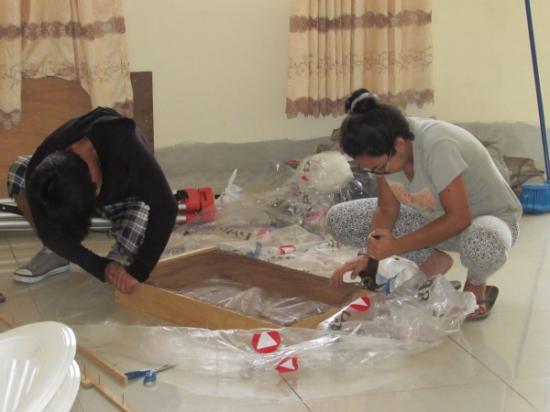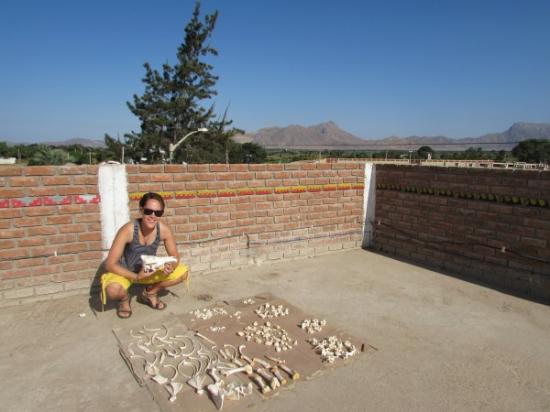Sarah Kennedy
Source - http://newswatch.nationalgeographic.com/2014/06/25/digging-into-perus-past-2/
Sarah Kennedy is a zooarchaeologist investigating the lives of native Peruvians under Spanish rule in their colonial period. In this installment, the expedition is just getting underway.
The 2014 PAZC (Proyecto Arqueològico Zaña Colonial/Zaña Colonial Archaeology Project) field season has just begun in northern Peru and I am lucky enough to be included in a large team of experienced American and Peruvian archaeologists. We are excavating at a coastal settlement near the town of Zaña, Peru, hoping to discover how the daily lives of coastal fishermen changed during Spanish occupation of the area in the colonial period.
Like any international research project, things were a little slow-moving at the beginning of the field season. We spent time fixing excavation tools, buying new excavation tools, and reorganizing existing collections.

Peruvian archaeologists fix an excavation screen for a new season of excavation work. (Photo by Sarah Kennedy)
We also had a few hiccups in our transportation to and from the field site. On one of the first days in the field, one of the field trucks got stuck trying to cross an irrigation ditch on the ride home (a project really hasn’t begun until a truck gets stuck!). The photo below really illustrates what usually happens in these situations—one person with a shovel and a lot of bystanders!

On one of the first days in the field, the field truck got stuck trying to cross an irrigation ditch. (Photo by Sarah Kennedy)
I spent the rest of this first week in the field organizing some of my skeletal reference collections. I am going to be in charge of studying the animal bones from the excavation, which are important when we try to figure out past diet and fishing and hunting strategies. I had to go the roof to dry out some of my reference skeletons because they were still a little wet and some of my team members didn’t appreciate the smell!

Zooarchaeologist Sarah Kennedy organizes skeletal remains of a modern pig, which she will use this summer to help her identify remains from past pork consumption. (Photo by Sarita Fuentes Villalobos)
The rest of the team kept busy this week learning some new high-tech excavation procedures using the new tablet PCs that Project Director Dr. Parker VanValkenburgh provided for the archaeologists. Archaeologists will use the tablets instead of the usual pencil and paper to record unit and artifact information, to make unit sketches, and to take photographs of excavations. At night, all the information can be uploaded to a project database, facilitating data collection and entry, as well as being environmentally friendly! The only problem we may face is dirt and sand, which can easily enter the many crevasses of a tablet. Hopefully, a good amount of tape and care will keep these tablets working this season!

Archaeologist Lea Lorena Rojas takes preliminary photos of her excavation unit in a colonial church with a tablet PC. (Photo by Sarah Kennedy)
The area surrounding our excavations has a rich prehispanic and colonial history and I look forward to sharing more about our project and the history of this area in the weeks to come!

The remains of a colonial-period church (Iglesia Matriz) from the late 16th and early 17th centuries, located near the town of Zaña, Peru. (Photo by Sarah Kennedy)